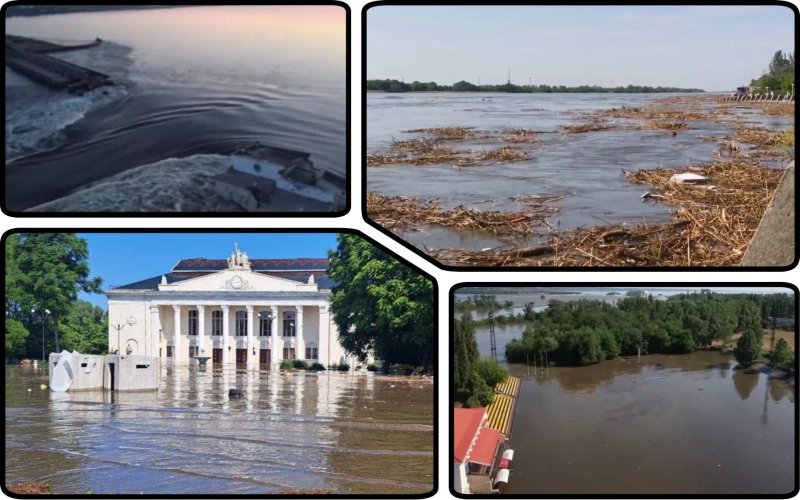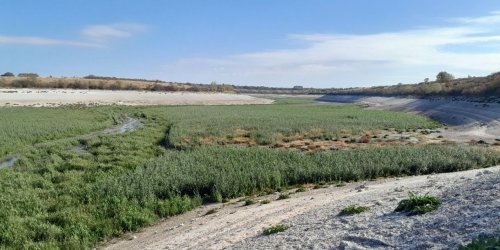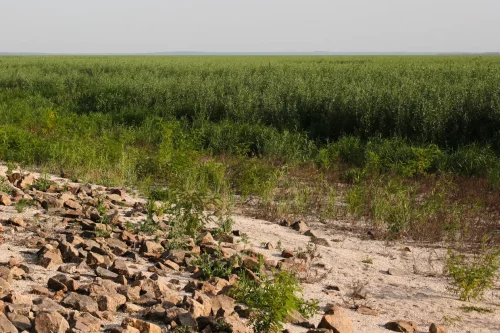The Kakhovka hydroelectric power plant (HPP) was located in southern Ukraine, half a kilometer from the town of Nova Kakhovka in Kherson region. The Russian occupiers seized it on the first day of the full-scale invasion on February 24, 2022. They immediately mined the station and blew it up on June 6, 2023.
Read more about the environmental consequences of the Kakhovka hydroelectric power plant explosion and what is happening at the site of the Kakhovka reservoir now – on the anniversary of its destruction – in EcoPolitic' material.
History of Kakhovskaya HPP
The history of the Kakhovskaya HPP began in September 1950 with the adoption of a resolution of the Council of Ministers of the USSR on its construction. The place of construction was Veliky Lug – an important Ukrainian historical region. It was on the territory of the future Kakhovsky Reservoir that a number of Zaporozhye Siches were located. With the start of construction, Lug completely went under water along with the great Cossack heritage.
October 18, 1955 is considered the birthday of the Kakhovka hydroelectric plant – the day when workers completed the installation of its first turbine. Its installed capacity was 334.8 MW.
After the completion of construction, the Kakhovskaya HPP named after P. S. Neporozhnyi became the last, lower step of the Dnipro cascade of hydroelectric power plants.
Environmental consequences of blowing up the Kakhovskaya HPP
In March of this year, scientists from the British Center for Ecology and Hydrology (UKCEH) and HR Wallingford published the results of their research regarding the consequences of the Russians blowing up the Kakhovskaya HPP dam. They identified huge threats to the environment and biodiversity. Scientists used cutting-edge technology to conduct the first independent assessment of the aftermath just weeks after the disaster. The study combined hydrological and digital modeling with analysis of satellite images and environmental data.
Scientists found that the dam's destruction led to such ecological consequences as the death of thousands of fish, the devastation of the Kakhovsky Reservoir, and the erosion of sediments. They identified more than 1,000 potential sources of pollution in flooded areas, including industrial facilities and sewage treatment plants.
The study showed that the dam explosion damaged half a million hectares of protected areas of national and international importance, in particular the Black Sea Biosphere Reserve.
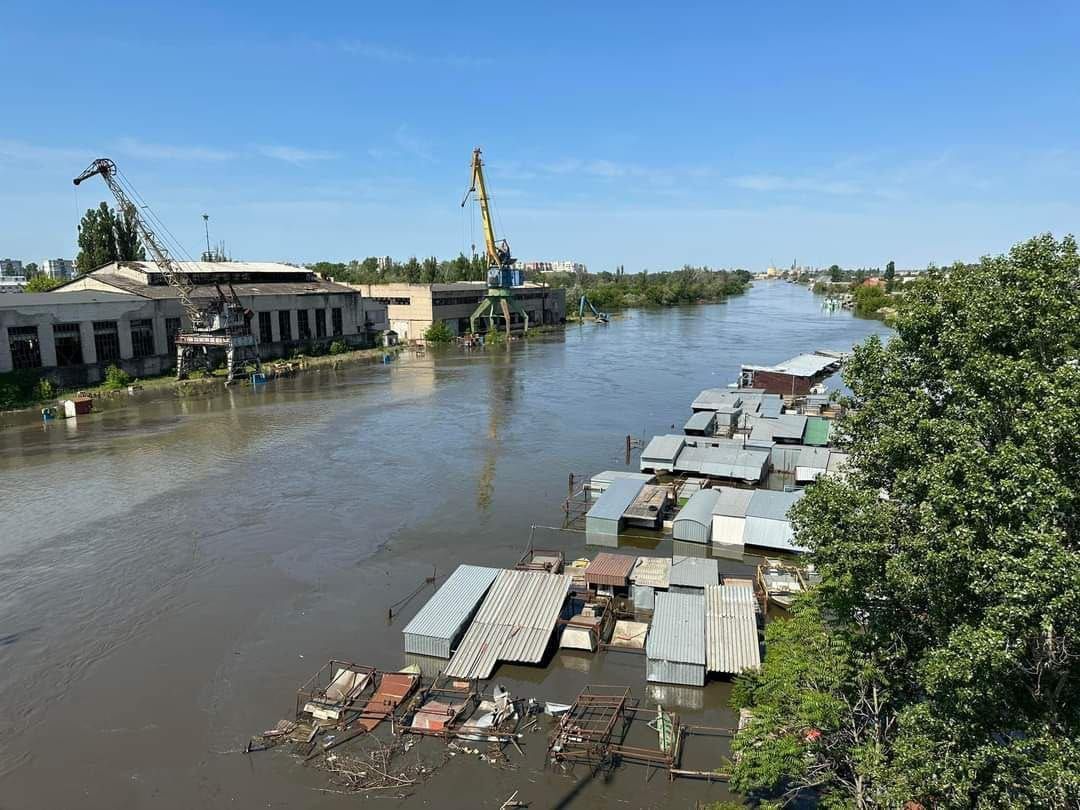
Independent OSINT researchers equated the environmental and economic consequences of the detonation and destruction of the Kakhovskaya HPP to the consequences of using tactical nuclear weapons of 5-10 kilotons only without radiation contamination.
"According to the Geneva Convention (Article 56 of Additional Protocol I of 1977), actions to destroy dams are a war crime and can be equated to the use of weapons of mass destruction," they emphasized.
As a result of the explosion of the Kakhovskaya HPP, at least 150 tons of engine oil entered the Dnipro River потрапило, and there was also a risk of further leakage of more than 300 tons.
In his address to the anniversary of the blowing up of the Kakhovskaya HPP, President of Ukraine Volodymyr Zelenskyi called this terrorist act "a deliberate and calculated crime – one of their [the Russian occupiers – ed.] biggest crimes against nature and people of our entire region." He recalled that when the invaders blew up the Kakhovskaya HPP, at least tens of thousands of people were injured, and hundreds of thousands were left without drinking water.
"Significant territories of Ukraine were flooded and the Kakhov reservoir was destroyed, which ensured, in particular, the stability of the Zaporizhia nuclear power plant – the largest in Europe. The direct consequences of this crime were felt even in the neighboring countries of our Black Sea region," the head of state noted.
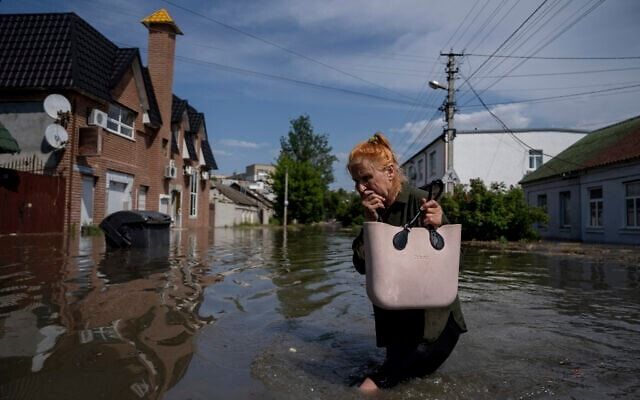
Undermining of the Kakhovskaya HPP dam
Volodymyr Zelenskyi separately emphasized that holding Russia to just responsibility for this and other war crimes – deliberate Russian attacks on people and humanity, on all living things – will be no less significant work than eliminating the consequences of the Kakhovskaya HPP explosion.
What the Kakhov reservoir looks like today
All this year, Ukrainian scientists have been following the consequences of the explosion of the Kakhovka hydroelectric power station for the territory previously occupied by the Kakhovka reservoir.
Spring research showed that the bottom of the Kakhovsky Reservoir was completely covered with a young forest of white willow. The height of the forest that was formed in a year is 2.5-3 m. Now it is very dense, but over time, ecologists say, the forest will thin out due to growth and increased competition between individual plants.
The lower tier of forest plantations consists of both typical types of steppe sedges – water sorrel, Laxman's cattail – and new species of flora that have acclimatized to local conditions.
The scientists demonstrated how the Kakhov reservoir looks like today in the video from the TV channel "Society. Dnipro".
satellite images of what the Kakhov reservoir looks like in 2024 from space have appeared online. The relevant photo was published by Valentyn Shcherbyna, vice president for military ecology and restoration of ecosystems of the Association of Environmental Professionals. He noted that at the site of the former Kakhovsky reservoir, the plavni ecosystem is being restored as a stable and self-sufficient natural system that does not need to be disturbed or interfered with.
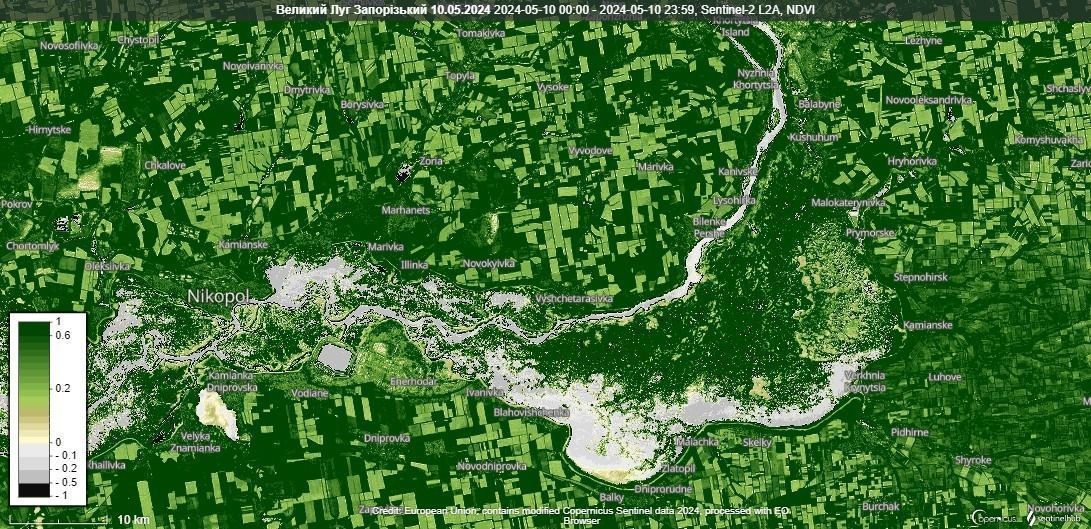
Kakhovskaya HPP now: to rebuild or not?
In July 2023 Cabinet of Ministers approved a resolution on an experimental project to rebuild the Kakhovskaya HPP, which was blown up by the occupiers. It assumed that the project would last 2 years and cover 2 stages: design and reconstruction after the de-occupation of the territory.
In April of this year, environmentalists urged not to rebuild the Kakhovskaya HPP now and in the future. Specialists of the All-Ukrainian Environmental League expressed their opinion that balanced and sustainable development is possible without the restoration of this hydroelectric plant. They believe that the government's decisions regarding the experimental project to restore the Kakhovskaya HPP are now being made too hastily and without sufficient justification.
The head of the All-Ukrainian Environmental League Tetiana Tymochko then noted that the Environmental Agreement for Ukraine, which contains all positions and recommendations on the economy, social policy, ecology, infrastructure, security, in particular, mentions the Kakhovka HPP.
The expert emphasized that one of the 50 recommendations set forth in the Agreement from the international community reads as follows: to take into account the opinion of scientists and the public regarding the future of Kakhovskaya HPP, regarding the possibility of restoring it or not. And this is a very important message.
In April of this year, almost a year after the moment when the Kakhovskaya HPP was blown up, video from the first minutes after the blow-up appeared.

